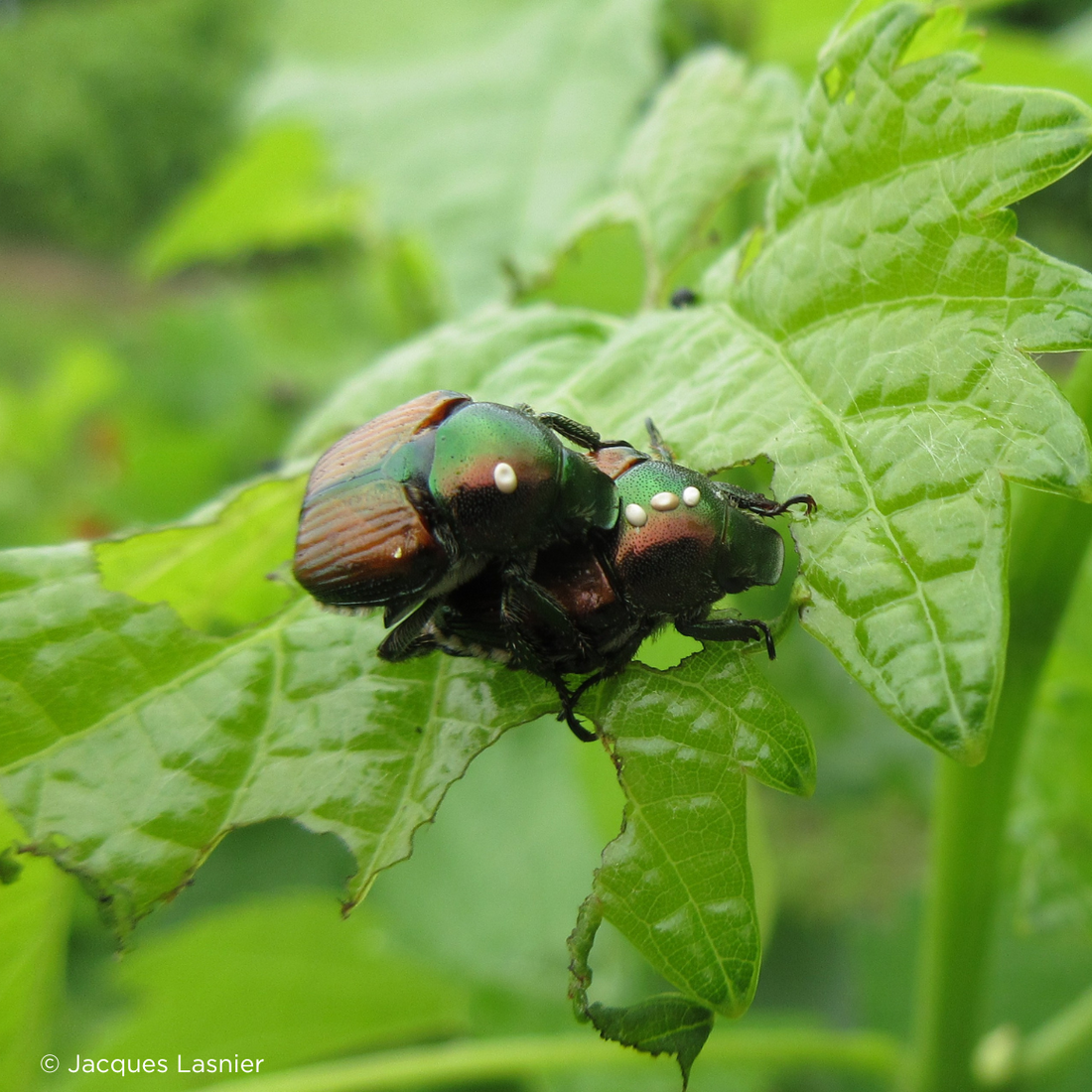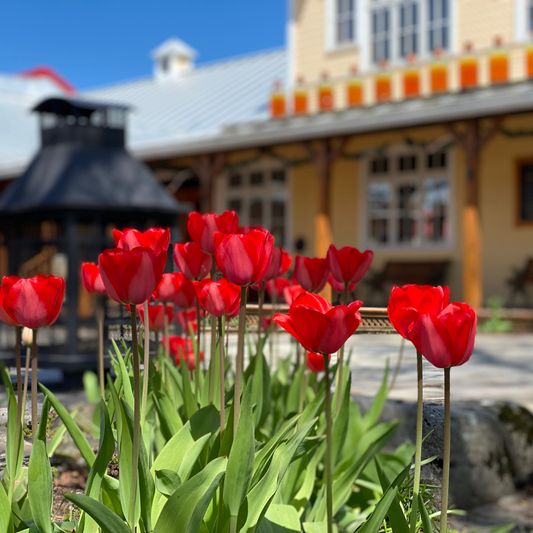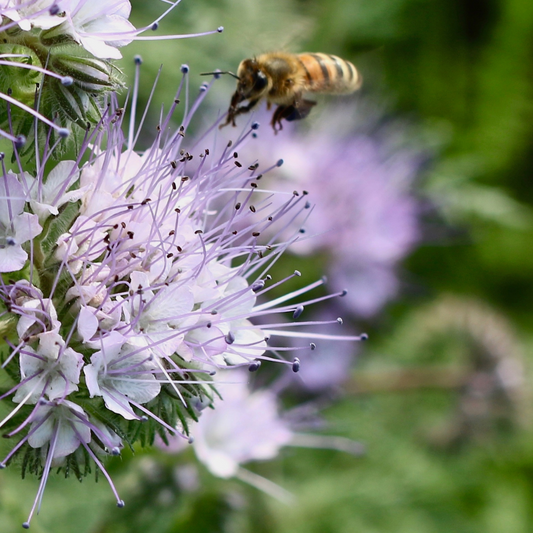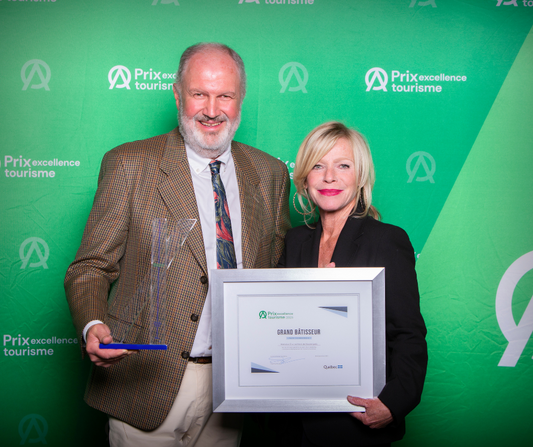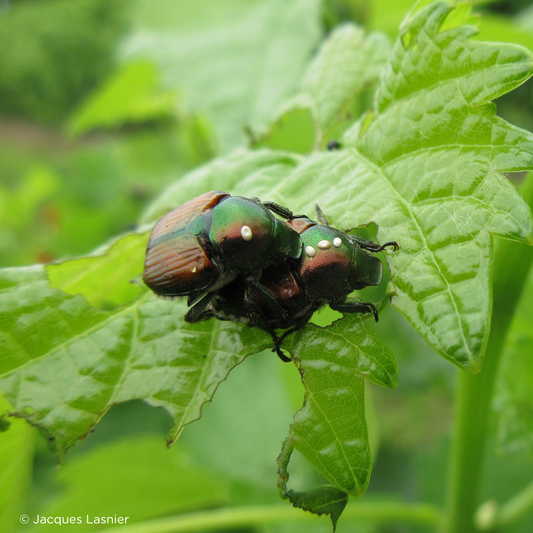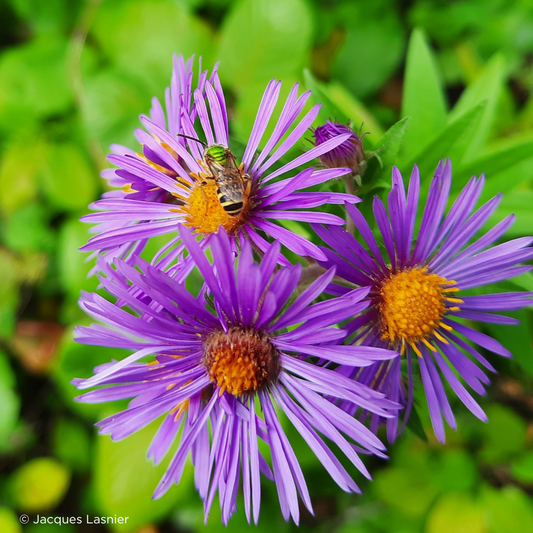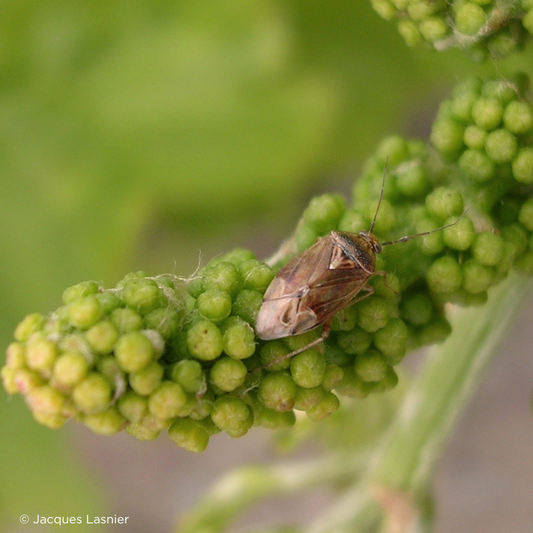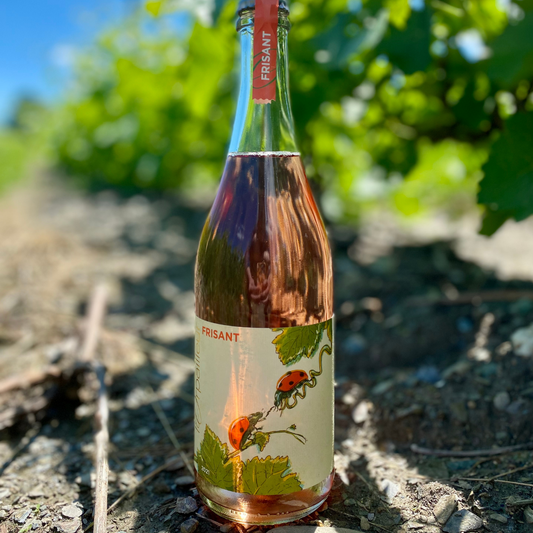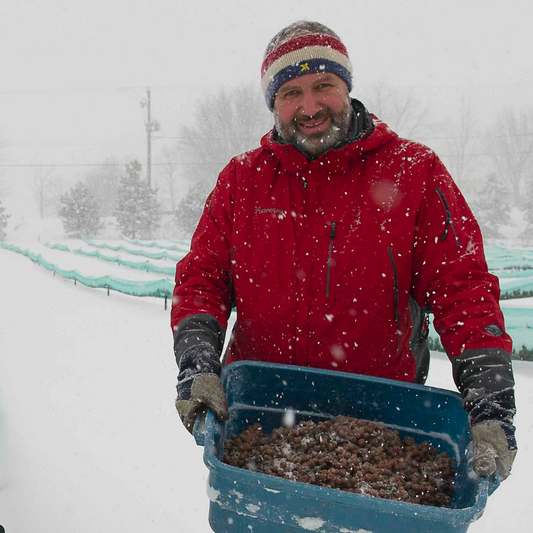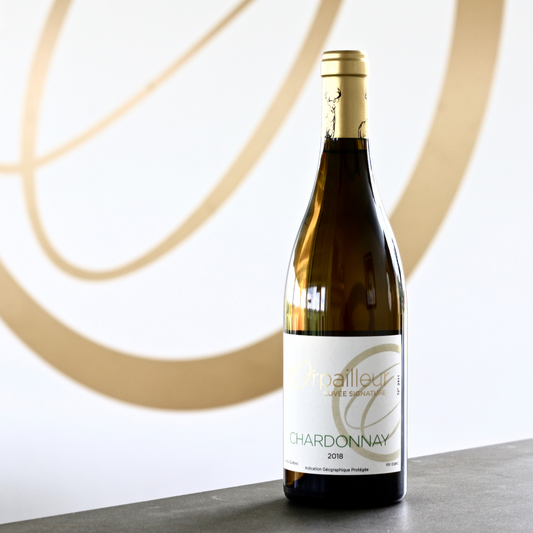Do you see the white dots on the Scarabs' heads?
These are the eggs of a useful parasite – the Tachinidae fly Istocheta aldrichi . When the eggs are about to hatch, the larva from its first days will feed on the beetle. This cycle allows us in a natural way to lower the beetle population on the vineyard and avoids us to treat chemically.
Since 2020, our strategy has been to understand the behavior of this fly in order to promote an environment conducive to its retention in our vines.
LIFE CYCLE OF THE TACHINIDE FLY ISTOCHETA ALDRICH
This fly, barely smaller than a house fly, emerges in its adult form from its pupa in late spring to mid-June. It feeds on nectar from the flowers present in its environment.

The Tachinidae fly Istocheta aldrichi.
Towards the end of June when the Japanese beetles emerge from the ground, this fly (I. aldrichi) starts laying its eggs just behind the Japanese beetles' heads (on the prothorax, pronotum) until the beginning of June. august.

Two Japanese beetles at the Vineyard on which we see several eggs of the Tachinidae fly (white dots).
The egg hatches shortly after being laid. The larva enters the Japanese beetle and feeds on the inside of the beetle (parasitism). Within a few days (about 5 days), the Japanese beetle dies. The fully mature larva forms its pupa in just a few hours.

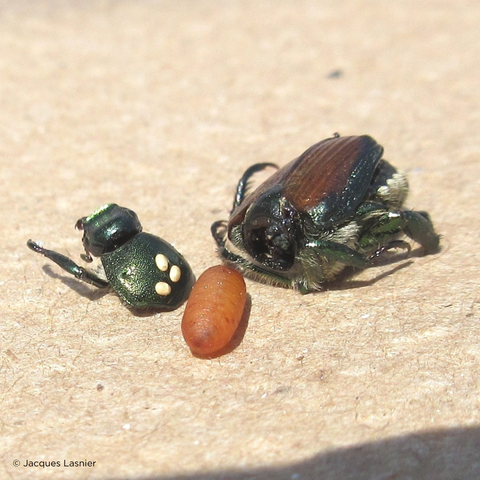
The larval stage on the left, then the pupal stage on the right. The pupa is the intermediate stage between the state of larva and that of adult fly.
The pupa will remain inside the shell (mummy) of the Japanese beetle until the following spring when it will emerge in its adult form (fly). Then, it will start its biological cycle again.

The egg hatched and the larva penetrated inside the Japanese beetle in which it will remain until the following spring in the pupal stage.
BALANCE REACHED IN THE VINEYARD BETWEEN PESTS AND PARASITES
Since 2014, the populations of the Tachinidae fly have increased exponentially at the Vineyard, which has contributed to the considerable reduction of the populations of the Japanese beetle. We note that a balance between the pest and its parasite is currently reached at the Vignoble de l'Orpailleur.

|
THE FRUITS OF OUR 25 YEARS OF RESEARCH AND DEVELOPMENT WITH AG-CORD AND CHARLES VINCENT. Charles Vincent worked from 1983 to August 2021 as a researcher in agricultural entomology for Agriculture and Agri-Food Canada's Horticultural Research and Development Center in Saint-Jean-sur-Richelieu, Qc. In this capacity, he collaborated for 25 years with Orpailleur and Co-Lab R&D. He is currently a scientific consultant, particularly in the writing of popular texts on agriculture, and in the production of podcasts related to agriculture and the environment.
|

